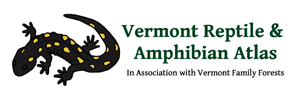Photographs & Videos
A few clear digital photographs of the animal in medium to high resolution (1 or 2 MB) are the best documentation. If possible (and safe) include a photo of both the back and underside of the animal. For snakes, a good photo of the head is also very useful. However, sometimes photographs are not possible. These can still be valuable records if the animal is clearly described. iNaturalist (another citizen science project) has some useful tips for photography in the video below.
Short videos can also be helpful in documentation. Please send those separately.
Written descriptions
If you did not photograph, record, or sketch the animal, a person familiar with reptiles and amphibians should be able to figure out what species you saw from your description. It is helpful if you:
- provide clear, detailed descriptions of a few key field marks that you saw; what size, what pattern, what colors, what shape (as much detail as you have)
- please note and describe any abnormalities seen, including how many organisms you found with abnormalities (e.g., three out of ten Leopard Frogs found were missing a rear leg)
Avoid the following kind of wording:
- “size shape and color of a gartersnake”
- “just like the picture in the book”
- a copied description from the book
- a list of your credentials explaining why you don’t need to write a detailed report (if you have credentials, you should understand the need and have the skills to write down the key field marks)
Rationale
In order to produce reliable species distribution maps, we must be absolutely certain of the correct identification of the species and where it was located. The basic idea is that anyone questioning the validity of a report now or twenty years from now could check a photograph, listen to a audio or visual recording, or read the written description, and from that information alone confirm your identification. Many people report rattlesnakes; upon investigation these snakes almost always turn out to be milksnakes or one of the other snake species which mimic rattlesnakes by shaking their tails. This is just one example of the sort of misidentifications which occur. Unfortunately we can not afford the time to check up on all of these reports. Therefore, please take the time to document the species as well as you possibly can.
Photography Tips
How to Take Better Photos for iNaturalist from iNaturalist on Vimeo.

